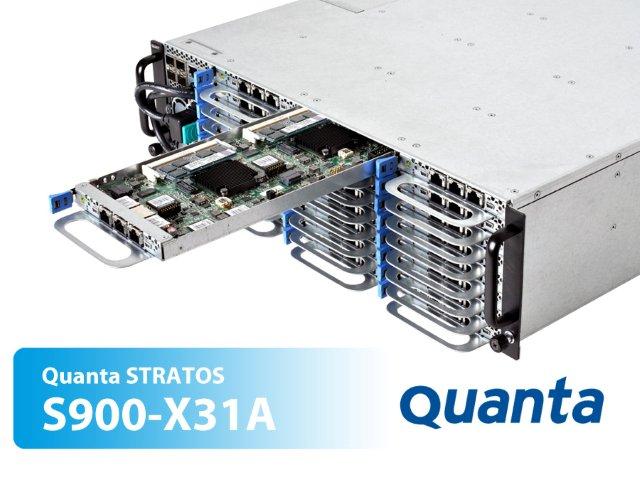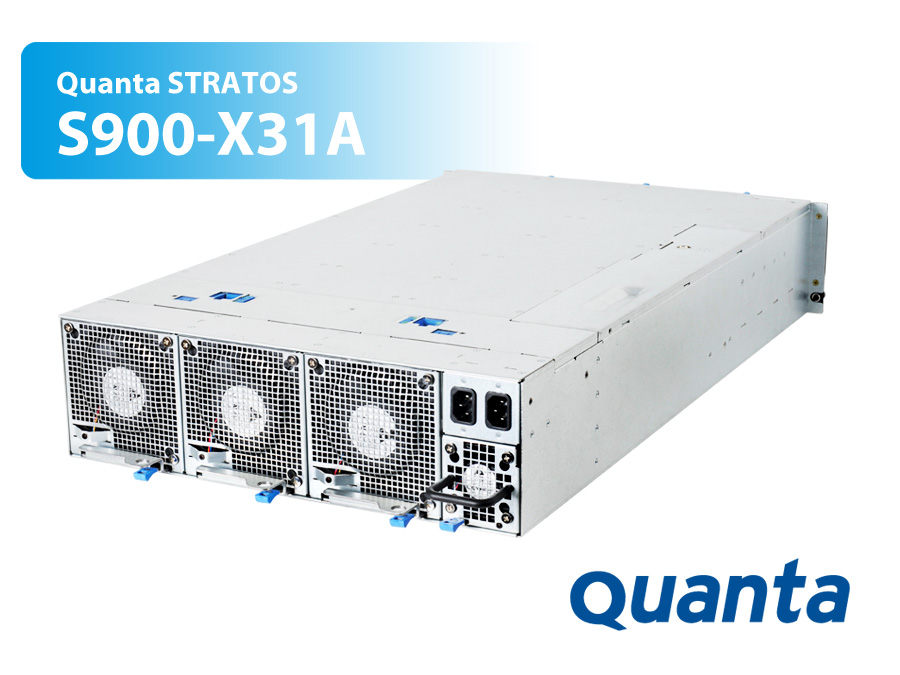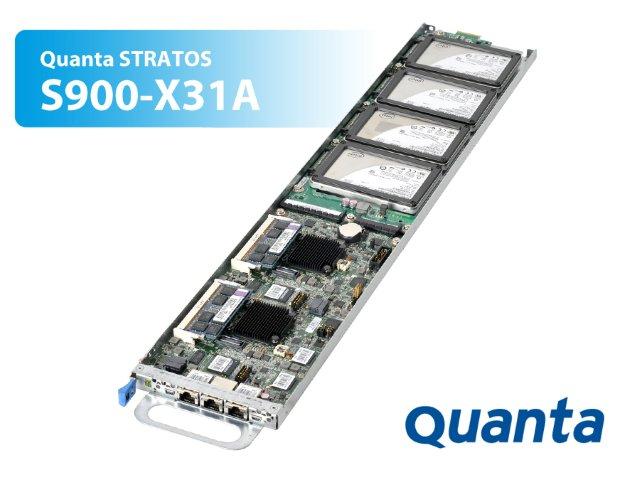Since 2008, I’ve been excited by, working on, and writing about Microservers. In these early days, some of the workloads I worked with were I/O bound and didn’t really need or use high single-thread performance. Replacing the server class processors that supported these applications with high-volume, low-cost client system CPUs yielded both better price/performance and power/performance. Fortunately, at that time, there were good client processors available with ECC enabled (see You Really DO Need ECC) and most embedded system processors also supported ECC.
I wrote up some of the advantages of these early microserver deployments and showed performance results from a production deployment in an internet-scale mail processing application in Cooperative, Expendable, Microslice, Servers: Low-Cost, Low-Power Servers for Internet-Scale Services.
Intel recognizes the value of low-power, low-cost processors for less CPU demanding applications and announced this morning the newest members of the Atom family, the S1200 series. These new processors support 2 cores and 4 threads and are available in variants of up to 2Ghz while staying under 8.5 watts. The lowest power members of the family come in at just over 6W. Intel has demonstrated an S1200 reference board running spec_web at 7.9W including memory, SATA, Networking, BMC, and other on-board components.
Unlike past Atom processors, the S1200 series supports full ECC memory. And all members of the family support hardware virtualization (Intel VT-x2), 64 bit addressing, and up to 8GB of memory. These are real server parts.
Centerton (S1200 series) features:

One of my favorite Original Design Manufacturers, Quanta Computer, has already produced a shared infrastructure rack design that packs 48 Atom S1200 servers into a 3 rack unit form factor (5.25”).
Quanta S900-X31A front and back view:


Quanta S900-X31a server drawer:

Quanta has done a nice job with this shared infrastructure rack. Using this design, they can pack a booming 624 servers into a standard 42 RU rack.
I’m excited by the S1200 announcement because it’s both a good price/performer and power/performer and shows that Intel is serious about the microserver market. This new Atom gives customers access to microserver pricing without having to change instruction set architectures. The combination of low-cost, low-power, and the familiar Intel ISA with its rich tool chain and broad application availability is a compelling combination. It’s exciting to see the microserver market heating up and I like Intel’s roadmap looking forward.
–jrh
Related Microserver focused postings:
· Cooperative Expendable Microslice Servers: Low-cost, Low-power Servers for Internet Scale Services
· The Case for Low-Cost, Low-Power Servers
· Low Power Amdahl Blades for Data Intensive Computing
· ARMCortext-A9 Design Announced
· 2010 the Year of the Microslice Server
· Very Low Power Server Progress
· Nvidia Project Denver: ARM Powered Servers
· AMD Announced Server-Targeted ARM Part
James Hamilton
e: jrh@mvdirona.com
w: http://www.mvdirona.com
b: http://blog.mvdirona.com / http://perspectives.mvdirona.com
Yes, I was thinking the same thing Allan. There absolutely is space for more nodes if the disks are deleted. I strongly suspect if you are buying reasonable numbers, Quanta would be happy to do that. I’ve seen some ARM based boards of the same dimensions that had gone down that path. Totally reasonable.
–jrh
The blades each have their own storage, which can potentially fit an extra 2 nodes. Why not have some shared storage in the same chassis or the same rack?
Ryan asked "If these have support for Intel TXT as well as the component VT-d, VT-x, etc. technologies, they might be really interesting, too".
Agreed. VT-x is there but txt and VT-d is not.
–jrh
Jack said "I can see microservers being ideal for intelligent storage devices, small business servers and so on. I’m not so sure Quanta’s blade setup is the ideal way to use them though."
Generally I’m not a huge believer in rack density for densities sake. Or, worded differently, I’m not willing to pay a premium for a more difficult to cool package that saves a bit of floor space. But, Quanta doesn’t charge the blade tax — the typical premium for blades — and it generally looks like a good package to me. When the silly blade markups are stripped away, shared infrastructure racks are good price/performers.
–jrh
If these have support for Intel TXT as well as the component VT-d, VT-x, etc. technologies, they might be really interesting, too.
I think the key is in the post: "Some of the workloads I worked with were I/O bound and didn’t really need or use high single-thread performance."
With virtualized megaservers you’re also dividing up the IO.
I can see microservers being ideal for intelligent storage devices, small business servers and so on.
I’m not so sure Quanta’s blade setup is the ideal way to use them though.
Aliaksei Kandratsenka raises a key question: is 8GB enough memory for memcache workloads. No, not really so this part is not really competing for these workloads. ARM devices will aggressively go after this market in 2013 and 2014 without the artificial memory cap. I would expect the Atom cap will be moved up over time.
Generally, if there are no limits on microservers, they will eat much of the megaserver market at much less profit. But, with too many limits they will be irrelevant. I have tons of advice to any processor producer who will listen and it generally focuses on removing these artificial caps. However, I totally get the possible negative business impact of uncapped microsoerver capability. In fact, I’m kind of looking forward to it :-)
–jrh
Eric Green asked the key question for Microservers: "The question is, are microservers really relevant in today’s marketplace? I can run 48 virtual machines with ease on a 1U dual-processor Sandy Bridge Xeon pizza box server class machine stuffed with memory. Granted, this new Atom also has the horsepower for some limited virtualization, but I question whether the performance is really there."
It all comes down to pricing. The server market generally gets hundreds of dollars per processor and price to the performance of the part and competition of which there is very little right now. The client device market generaly charges 10s of dollars per processor and the competition is amazingly high. If the performance per dollar is roughly the same, nobody would ever buy a microserver. Any workload that runs on the low-end parts will also run on the high end part. It has more option value so there is no way a microserer can win.
It all comes down to pricing. The way Microservers win is by leverage the client device market and delivering fundamentally better price/performance and power/performance. In the Intel Netburst architecture days, this wasn’t hard. Server designs from Nehelem and later are very good. The only way Microservers win is with competition and extraordinary volumes. this market will be driven by very high-core count ARM devices agressively priced supported by huge volumes competing with the Atomfamily with the familiar X86 ISA.
Megaservers win if Micros are not MUCH less expensive. I like the market dynamics emerging in the microserver market and think it’ll drive better prices in the microserver market and also in the megaerver market. So, yes, I think they are relevant but I get your point about the appeal of megaservers able to run any workload. Your question is an excellent one and it all comes down to pricing. We’ll see but I’m optimistic.
–jrh
Charles asked if you could run a desktop VDI farm on the servers such as the Quanta S900-X31A. Absolutely. Any partitionable workload where no single thread needs high-end server performance, can be run on microservers. Of course these workloads can also be run as guests in a virtual environment and so the right answer comes down to pricing. Microservers win when the server parts carry an excessively large "server tax".
–jrh
Hm. 8gigs is enough for this ? I.e. memcached is example of non-cpu intensive workload that would benefit from far larger ram limit. IMHO. Certain webservers may also benefit from larger rams
The question is, are microservers really relevant in today’s marketplace? I can run 48 virtual machines with ease on a 1U dual-processor Sandy Bridge Xeon pizza box server class machine stuffed with memory. Granted, this new Atom also has the horsepower for some limited virtualization, but I question whether the performance is really there. A 2U iSCSI box hooked up to a 1U ESXi or Xen/KVM box may not have the same ultimate performance on paper, but given typical usage patterns for cloud, in my experience it performs as well as 3U of microblades would perform in practice, while being far easier to manage — and much cheaper.
Thanks for the great overview James, the future needs this to increase efficiency and reduce the cost to deploy. question my be and a thought I wonder if you could build a vdi / desktop grid on this. Would love to see the performance stats for windows / Linux running on these